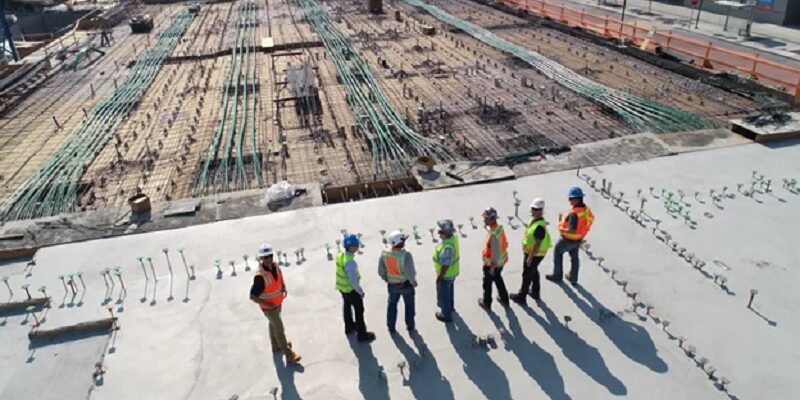When designing a building, it’s important to think beyond how it looks and functions. Today, reducing the carbon footprint of buildings is a serious responsibility, especially with the growing concerns about climate change. One key area to focus on is embodied carbon—the carbon emissions that come from producing and transporting the materials used in construction.
This article helps you understand how to choose the right embodied carbon values for your project, why it matters early in the design process, and where to focus your efforts to make the biggest impact.
Below, an excerpt from an Embodied Carbon Summary Report by the Carbon Leadership Forum.
Why Embodied Carbon Matters Early in Design
Each year, the materials used to build structures—like concrete, steel, insulation, and more—are responsible for 11% of all global greenhouse gas emissions. In the building industry, embodied carbon can make up 28% of all emissions. When we look at the full carbon footprint of a building, 39% to 80% of that total can come just from the materials used.
But here’s the good news: if we evaluate and plan for embodied carbon in the early stages of design, we can cut that number by up to 80%. This means that smart decisions made at the beginning of a project can have a major, lasting effect.
The truth is, we can’t reach the climate goals of the Paris Agreement without reducing embodied carbon in buildings.
What Is Embodied Carbon?
Embodied carbon refers to the amount of carbon dioxide (CO2) released into the atmosphere from making, transporting, and installing building materials. It’s different from operational carbon, which is the energy used while the building is running (like heating, cooling, and lighting).
Where Do You Find Embodied Carbon Values?
To understand the impact of materials, you need accurate data. Here’s where to get it:
- From a database like EC3 (Embodied Carbon in Construction Calculator).
- Product EPDs (Environmental Product Declarations) published by manufacturers.
- Industry-average EPDs, when product-specific ones aren’t available.
- Median values for a product type if no better data is available.
EPDs are like a nutrition label for building products. They tell you how much carbon was released during a product’s life cycle.
What Materials Have the Most Embodied Carbon?
Doing a full embodied carbon analysis can take time, especially if you look at every material. A smarter approach is to start with the biggest carbon contributors.
Here’s what the research says:
- In low-rise buildings (like houses or small offices), the external walls, floors, and foundations usually cause the most carbon emissions.
- In medium to high-rise buildings, the floor systems and structural frames (beams, columns, etc.) are the biggest sources of embodied carbon.
A study showed that materials like concrete and steel, which are used a lot in frames and foundations, are especially carbon-heavy. So, if you only have time to focus on a few elements, start there.
Simple Tips for Embodied Carbon Planning
You don’t have to be an expert to get started. Here are some practical steps:
- Start with structural elements: Begin your carbon tracking with structural framing and foundations. These materials often account for the largest share of embodied carbon.
- Create a local list: Make a document with common materials used in your area and their embodied carbon values. This will make future projects faster and easier.
- Use the right tools: Tools like EC3 and Revit energy modeling features can help you run quick studies to compare material choices.
- Learn from others: Look at case studies from similar projects. For example, a study of an apartment building in the UK found that just 36% of the materials used in a building were responsible for 80% of the total embodied carbon.
Real-World Examples
Let’s say you’re working on a mid-rise office tower. Instead of looking at every single finish or interior detail, first analyze the concrete slabs, the steel frame, and the foundation system. These are the materials that will have the most impact on your building’s total carbon footprint.
Another example: When designing an apartment building, focus first on the external walls and roof. One study showed these areas can account for 41% of total emissions and more than half of the cost of the structure.
Final Thoughts: Making a Real Difference
Reducing embodied carbon isn’t just about numbers or software—it’s about creating better buildings for the future. By thinking about carbon early in your design process, you’re helping fight climate change and making smarter, more cost-effective choices for your project.
Even small steps—like choosing a lower-carbon concrete mix or reducing steel use—can make a big difference over time. And as tools and data become more available, this process will only get easier.
Quick Recap: Where to Begin
- Focus on high-impact materials first (concrete, steel, insulation).
- Use trusted databases like EC3 for data.
- Keep a material list with local options and carbon values.
- Start simple, then go deeper as you learn more.
If you find helpful resources from local material suppliers or have tips to share, let others know! Working together and sharing knowledge is key to building a more sustainable future.













